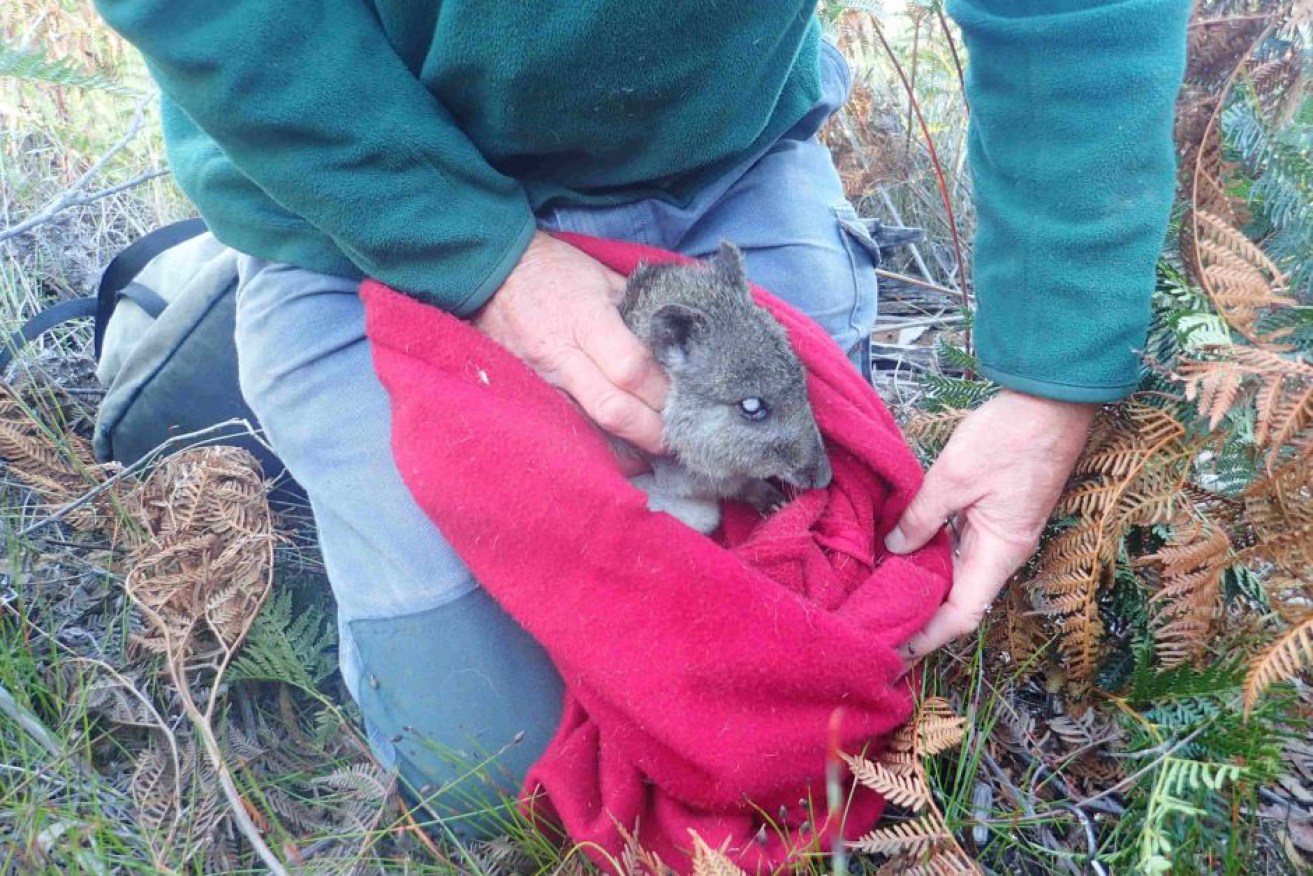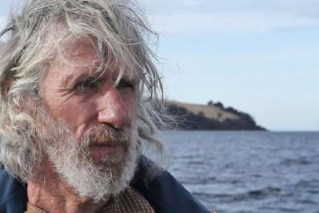Oldest living wild potoroo found in reserve in Tasmania’s south

Scientists say this is the oldest living wild potoroo recorded. Photo: Parks and Wildlife Service
This marsupial probably won’t get a letter from the Queen, but at almost 10 years of age it has the title of the oldest living wild potoroo ever recorded.
The long-nosed potoroo lives in the Peter Murrell Conservation Area in Tasmania’s south, and is at least nine years old.
It beating the age record of seven years and four months taken at Mount Nelson in 1966.
Zoologist Michael Driessen has been monitoring mammals in the reserve to examine the effects of planned burns on fauna.
“We want to know what sort of timeframe we want to do that burning [over],” Mr Driessen said.
“So understanding how long animals live for will help inform that advice.”
The potoroo was first caught in 2011, when it was about one year old.
Since then it has been regularly caught and examined.
“As far as we’re aware it’s the oldest living wild potoroo ever recorded,” Mr Driessen said.

Zoologist Michael Driessen has been researching potoroos in the Peter Murrell Conservation Area. Photo: ABC Hobart
Time takes its toll
Old age has caught up with the potoroo, which is now blind in one eye and has lost weight.
“He’s not quite in the same nick as to when we first caught him,” Mr Driessen said.
“Clearly the reserve is providing all the resources this potoroo requires, and there are a few other long-lived potoroos in the reserve too.”
Mr Driessen said it is possible there are other potoroos of advanced age in the wild, but they have not been documented.
A captive male potoroo held at Healesville Sanctuary in Victoria lived to be ten years old, while another lived to be nine years old at the Houston Zoological Gardens in Texas, in the US.
“There was a posse of potoroos that were eight years old in the study population,” Dr Driessen said.
“So it is possible that one of these or our blind male could break the 10 year record.”
Tasmanian devils and bandicoots live up to only four years, while the much larger Bennett’s wallaby has a life expectancy of about nine years.

The long-nosed potoroo is a secretive animal that likes thick vegetation. Photo: Kristian Golding: Flickr.com
A secretive, fungi-loving mammal
The potoroo is widespread across Tasmania and in parts of the mainland, where foxes and habitat loss has led to a reduction in numbers.
“They’re quite secretive. Most people wouldn’t normally see them because they live in thicker vegetation,” Mr Driessen said.
Potoroos produce young in a pouch twice a year and dig for fungi to eat, particularly truffles.
–ABC







